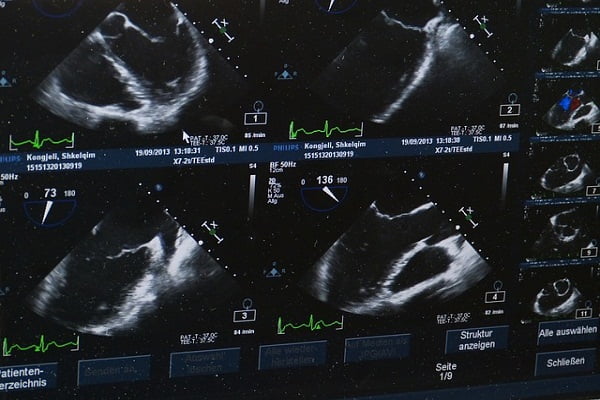Ovarian Cyst Ultrasound
- Updated on: Jul 13, 2024
- 3 min Read
- Published on Oct 3, 2019


Can you see ovarian cysts on an ultrasound? Can you see a ruptured ovarian cyst on an ultrasound?
The first step in the diagnosis of ovarian cysts (or a ruptured cyst) is an ultrasound that allows your doctor to see inside your abdomen.
In case of a ruptured ovarian cyst, the ultrasound usually will show some fluid around the ovary, and may even show the empty sac. A complete blood count will also likely be done to check for signs of infection and blood loss.
Ovarian cyst ultrasound is the best test for evaluating a ruptured ovarian cyst, but it is not perfect. Your doctor will confirm the diagnosis by ruling out other conditions that can mimic signs and symptoms of a ruptured ovarian cyst. For example, your doctor will perform a pregnancy test to rule out certain conditions such as ectopic pregnancy. She/he will also perform a pelvic exam to rule out pelvic inflammatory disease and other conditions of the pelvic floor.
There are a number of other non-gynaecological conditions that can mimic as a ruptured ovarian cyst such as appendicitis and a kidney stone. This is why your doctor will be thorough, so do not get panic if a number of tests are ordered.
Depending on when the rupture took place and whether the cyst is haemorrhagic or not, ruptured ovarian cysts can have a variety of appearances.
More: Ovarian Cyst: Causes, Symptoms, Diagnosis, Treatment
More: Ruptured Ovarian Cyst Can Your Ovaries Burst
Ovarian cyst ultrasound procedure
Ovarian cysts are usually diagnosed by using a technique of ultrasonography known as Transvaginal ultrasound.
An ultrasonography uses high-frequency sound waves to create images of your internal organs. It can identify irregularity and helps your doctor to diagnose the condition.
A transvaginal ovarian cyst ultrasound, also known as endovaginal ultrasound, is a type of pelvic ultrasound used by doctors to examine female reproductive organs such as uterus, fallopian tubes, ovaries, cervix, and vagina.
The word “Transvaginal” means through the vagina and this is an internal examination. Whereas in a regular abdominal or pelvic ultrasound, the ultrasound wand, or transducer, stays on the outside of your pelvis, the trans-vaginal procedure involves insertion of the probe into the vaginal canal. Your doctor or a technician will insert an ultrasound probe about two or three inches into the vaginal canal. The probe is covered with the conducting gel and a plastic or a latex sheath.
You may feel little bit of pressure as your doctor inserts the transducer. Once it is inside of you, the picture of inside of your pelvis is transmitted on a monitor as the sound waves bounces off your internal organs. Your technician or doctor may slowly turn or move the transducer, while it’s still inside your body to get comprehensive picture of your internal organs.
More: Ovarian Cyst Pain Relief What Can I Do For Ovarian Cyst Pain
What are the risks of a transvaginal ultrasound? Is it safe for a pregnant woman and foetus?
There are no known associated risks with this procedure of ultrasound. Since no radiation is used in this imaging technique, performing it on a pregnant women is also safe, for both mother and foetus.
More: Ovarian Cyst During Pregnancy: How Do Ovarian Cysts Affect Pregnancy
You will feel pressure and sometime discomfort when the probe/transducer is inserted into your vagina. The discomfort should be minimal in intensity and usually go away once the procedure is complete. If something is extremely uncomfortable to you during the exam be sure to let the doctor or technician know about it.












